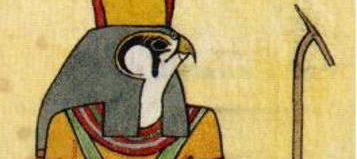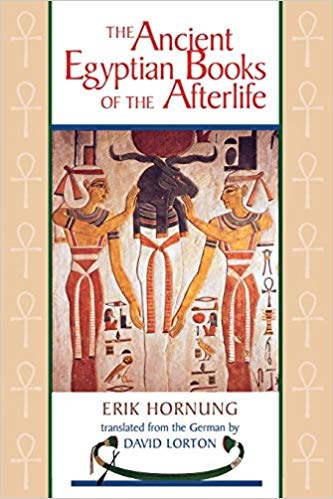Planetary hours were a development within Hellenistic and early Roman astrological practice that produced the seemingly unusual order of the days of the week still in use today. The technique of planetary hours was used to calculate the ideal time for planetary ritual work, when the influence of a given planet was strongest during certain periods in the day. Many ancient texts also attest the importance of gathering herbs on the appropriate planetary hour and day in order to optimize their potency. The widespread use of the technique among astrologers of the period leaves its traces in the modern world in such words as “horoscope” (literally, “hour-marker”1“The Hellenistic astrologers usually refer to the Ascendant as the “Hour-Marker” (hōroskopos) in Greek.” Brennan, Hellenistic Astrology, p. 321.), as well as in our planetary week.
The practice consisted of assigning the seven classical planets2The seven classical planets (including the sun and moon) were the astral bodies that were seen to “wander” against the background of “fixed” stars (which travel across the sky in an apparently static relationship to each other: hence the consistent constellations of the Zodiac, etc.). The Greek word “planet” (πλανήτης) comes from the verb πλανᾶσθαι: “to wander.” to the 24 hours of the day in descending “Chaldean” or Ptolemaic order. Although there were multiple competing orders of the planets in the Hellenistic period (Plato, for example, used a different order, sometimes confusingly called the “Egyptian” order), the Ptolemaic order (devised around the second century BCE3Zerubavel 1985:14; Neugebauer 1975:690 ff.) became dominant in the wake of Claudius Ptolemy (c. 100-170 CE). It seems to be the case that the Ptolemaic order was based on the orbital periods of the planets, as follows:
Saturn: 29.46 years
Jupiter: 11.86 years
Mars: 686.98 days
Sun: 365.26 days
Venus: 224.70 days
Mercury: 87.97 days
Moon: 29.53 days4Zerubavel 1985:14; Richards 1998:269
(In the case of Mercury and Venus, which appear to wander “along with” the sun, the orbital periods were calculated based on the occurrence of the apparent retrograde motion of the planets.)
The division of the day and night into twelve hours each was developed by the ancient Egyptians, long before there was any evidence of a seven-day week. Dividing the night into twelve equal divisions is quite prominent, for example, in the New Kingdom (16th-11th centuries BCE) underworld books, such as The Amduat, The Book of Gates, The Spell of the Twelve Caves, and so on.5See especially Hornung, The Ancient Egyptian Books of the Afterlife, pp. 26-135 and Schweizer, The Sun God’s Journey through the Netherworld.
During the Hellenistic period, probably in Alexandria, the practice was devised of assigning each hour of the day and night to one planetary deity in descending “Chaldean” order. The planet assigned to an hour was called a “chronocrator” (χρονοκράτωρ) or “time-ruler.” The planetary days were then assigned based on the rulership of the first hour of each day (i.e., the first hour after sunrise).
By the numbers: The 7 planets are assigned to the 24 hours of each day, requiring 168 hours (7 days) to complete the cycle (7 x 24 = 168, the smallest number divisible by both 7 and 24). From the limited perspective of each day, a descending sequence of 7 planets is assigned 3 times (7 x 3 = 21 hours), with a remainder of 3 hours. It is this “remainder” that produces the counter-intuitive order of the days of the week. In other words, the order of the planetary week is based on a permutation of 7 planets over a repeating pattern of 24 hours. This can be grasped most easily using a full chart of the planetary hours for an entire week:
| Hour | Day 1 (Saturday) | Day 2 (Sunday) | Day 3 (Monday) | Day 4 (Tuesday) | Day 5 (Wednesday) | Day 6 (Thursday) | Day 7 (Friday) |
| 1 | Saturn | Sun | Moon | Mars | Mercury | Jupiter | Venus |
| 2 | Jupiter | Venus | Saturn | Sun | Moon | Mars | Mercury |
| 3 | Mars | Mercury | Jupiter | Venus | Saturn | Sun | Moon |
| 4 | Sun | Moon | Mars | Mercury | Jupiter | Venus | Saturn |
| 5 | Venus | Saturn | Sun | Moon | Mars | Mercury | Jupiter |
| 6 | Mercury | Jupiter | Venus | Saturn | Sun | Moon | Mars |
| 7 | Moon | Mars | Mercury | Jupiter | Venus | Saturn | Sun |
| 8 | Saturn | Sun | Moon | Mars | Mercury | Jupiter | Venus |
| 9 | Jupiter | Venus | Saturn | Sun | Moon | Mars | Mercury |
| 10 | Mars | Mercury | Jupiter | Venus | Saturn | Sun | Moon |
| 11 | Sun | Moon | Mars | Mercury | Jupiter | Venus | Saturn |
| 12 | Venus | Saturn | Sun | Moon | Mars | Mercury | Jupiter |
| 13 | Mercury | Jupiter | Venus | Saturn | Sun | Moon | Mars |
| 14 | Moon | Mars | Mercury | Jupiter | Venus | Saturn | Sun |
| 15 | Saturn | Sun | Moon | Mars | Mercury | Jupiter | Venus |
| 16 | Jupiter | Venus | Saturn | Sun | Moon | Mars | Mercury |
| 17 | Mars | Mercury | Jupiter | Venus | Saturn | Sun | Moon |
| 18 | Sun | Moon | Mars | Mercury | Jupiter | Venus | Saturn |
| 19 | Venus | Saturn | Sun | Moon | Mars | Mercury | Jupiter |
| 20 | Mercury | Jupiter | Venus | Saturn | Sun | Moon | Mars |
| 21 | Moon | Mars | Mercury | Jupiter | Venus | Saturn | Sun |
| 22 | Saturn | Sun | Moon | Mars | Mercury | Jupiter | Venus |
| 23 | Jupiter | Venus | Saturn | Sun | Moon | Mars | Mercury |
| 24 | Mars | Mercury | Jupiter | Venus | Saturn | Sun | Moon |
Stay tuned for Part 2 of this article, coming soon…

